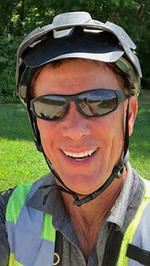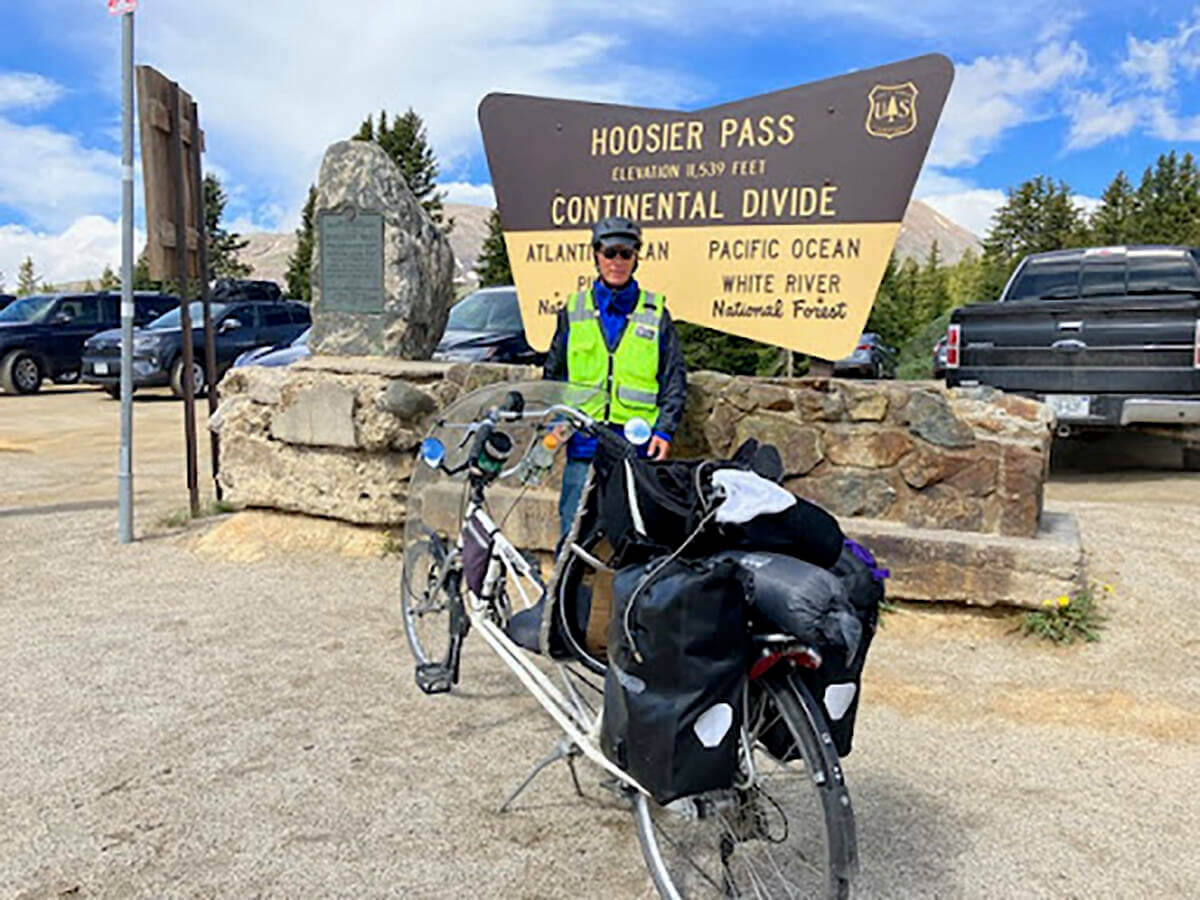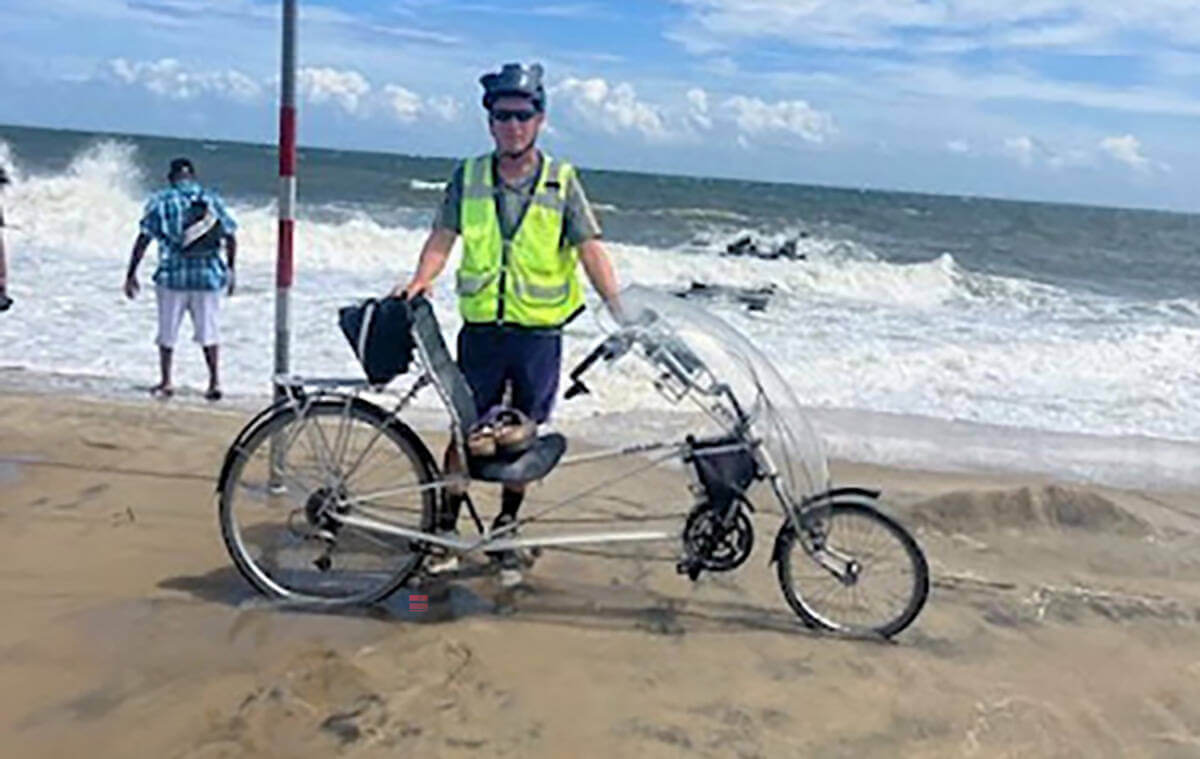 A moment’s pause in Wood River, Illinois. Photos provided
A moment’s pause in Wood River, Illinois. Photos provided

In the spring of 2022, Mike Di Blasi began biking the TransAmerica Trail with little to no previous training. Despite strenuous hills, flat tires and a penchant for conjuring rainstorms, Di Blasi learned not to panic about a problem — and not to turn away from help when he needed it. In his book, Mike on a Bike: Across the U.S. in 83 Days, he writes about sticking to the 4,200-mile challenge from Astoria, Oregon, to Rehoboth Beach, Delaware, and of the people who encouraged him along the way. When he’s not on the bike, he splits his time between Portland, Oregon, and Palm Springs, California.
What inspired this journey and how did you train for it?
Somebody that did it said, “I learned more about this country in 90 days than you would learn in a lifetime.” I think that was something I kind of got in my head, that this would be a great thing to do. I didn’t really train for it. My bike was a recumbent bike. I got it a couple of weeks before the trip and rode it as much as I could. I didn’t ride more than about four miles a day, something like that. I met someone at a bike hostel who said that if you can make it through 15 days of this ride, your body adjusts to get strong enough to make it the whole way. At Day 9 I was just so tired and exhausted and sore. But it was almost to the day, at about 15 days, yeah, I got much more in a routine and I was not ending the day completely exhausted.
How did you use the advice others gave you?
People say that everyone’s ride is unique. I got a lot of inaccurate advice from people that were not cyclists. I’ve heard people say watch out for these big tractor trailer trucks, they don’t care about bikes, this and that. And I would say that was almost always incorrect. They would really make an effort to give you plenty of space. Usually the motorists that I would have trouble with occasionally would be people that were more anonymous, in a truck or an SUV. I was thinking of making a sign that said, “I’m sorry for using your road, Your Majesty, please proceed.”

What were some of the challenges you faced, and how did you handle them?
I don’t know who came up with this idea, but it always seemed to be a big hill just before you got to your destination, when you were the most tired. In the beginning I had five flat tires and a lot of issues with rain. It was partly my own fault because I just didn’t know how to patch a tire. I watched a YouTube video on my phone and figured out I was putting them on upside down.
One thing that was super helpful to me was that people — I guess you could call them trail angels — really helped me out. I had a flat tire in Wyoming and a woman in a van, who was actually heading the wrong way, came back to pick me up and took me to a bike shop. There was a time, I remember, I was trying to get to Dillon, Montana, in 60 mile-per-hour winds. I was getting blown off the road and when I got to a little town — it took me about four hours to go 18 miles to get to this town — a woman in the bar gave me a piece of cardboard and a marker and I wrote “Dillon” on it. This really nice couple in a truck picked me up. I’m a very determined person — some people say pigheaded, I say determined — so I would say part of it is that, but then also having people help me.
There was a Notre Dame connection as well. When I was in western Kansas in a town called Tribune, there was no lodging. I looked on Google Maps and saw that there were three churches there. I rode to the Methodist first. They would host me but there was a high rate of COVID-19 in their congregation. Then I rode to the Catholic church in town. I might have mentioned that I went to Notre Dame. The priest agreed to host me, when he picked me up I was wearing a Notre Dame shirt. That worked out really well.

Did your faith play a role in this journey?
When I’m down in southern California I sing in a choir in an Episcopal church, and I was keeping them up to date. I tried to take a rest day once a week on Sunday so I could attend church — that worked out a few times. In the Midwest, you know, there’ll be like 20 or 30 people in attendance, so you always stick out. I remember I was in Kansas and went to an Episcopal church, and they made me stand up and introduce myself. The sermon was on the story of the Good Samaritan. It made me think about my trip because so many trail angels or Good Samaritans would reach out to me. It really spoke to me, a lot of it had to do with people that helped me on this trip, but it also made me think that when I’m riding around Portland in my truck that I should try to be more aware if I see someone who could use assistance. It’s kind of a two-way street.
Would you ever do a trip like this again?
I think with a little time behind me. I don’t imagine myself doing a trip this challenging, but I had thought, “Oh, maybe it’d be fun to do this with someone else,” and spend some more time in a couple of these interesting towns. I have had people say, you know, “Are you writing another book?” And I say, “I’m writing a book called ‘Mike on a Couch’” . . . but never say never.
Interview by Kate Ross, a rising senior American studies major and journalism minor. She is this magazine’s summer intern.